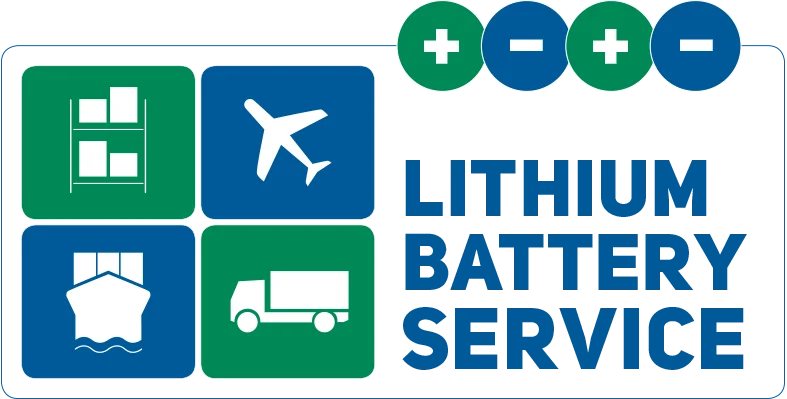Find a single checklist
Choose the checklist for your actual demand by using our Checklist Finder.
You will then be able to download the checklist directly, if you have already purchased it.
Choose your transport case:
Choose your transport case:
Choose your transport case:
What variety of shipping are you using?
What variety of shipping are you using?
Damaged/Defective according to the Dangerous Goods Transport Regulations is when at least one of the following criteria is fulfilled for the cells / batteries:
- Cells / Batteries were identified as being defective for safety reasons.
- Cells / Batteries have leaked or vented.
- Cells / Batteries have sustained physical or mechanical damage.
- Cells / Batteries cannot be diagnosed prior to transport.
Note:
In assessing a cell or battery as damaged or defective, an assessment or evaluation shall be performed based on safety criteria from the cell, battery or product manufacturer
or by a technical expert with knowledge of the cell’s or battery’s safety features. An assessment or evaluation may include, but is not limited to, the following criteria:
- Acute hazard, such as gas, fire, or electrolyte leaking;
- The use or misuse of the cell or battery;
- Signs of physical damage, such as deformation to cell or battery casing, or colours on the casing;
- External and internal short circuit protection, such as voltage or isolation measures;
- The condition of the cell or battery safety features; or
- Damage to any internal safety components, such as the battery management system.
Criteria for a safety critically defective cell / battery:
Is ensured that the assessment is made by a qualified person that the cells / batteries are not liable to disassemble, react dangerously, produce a flame
or a dangerous evolution of heat or a dangerous emission of toxic, corrosive or flammable gases or vapours under normal conditions of carriage?
Is one of the above criteria fulfilled it is considered a safety critically defective cell / battery.
Choose the transport mode:
Do you ship Cells or Batteries?
The difference between cells and batteries is explained here:
Frequently Asked Questions
What´s the Watt-hour rating in Watt-hours (Wh) of your cell or battery?
-
The Watt-hour Rating is calculated using the nominal voltage in Volt (V) and the capacity Ampère hours (Ah) in the following formula:
Wh = V x Ah
Take for example the accumulator of a mobile phone: 3,7 V x 1500 mhA = 3,7 V x 1,5 Ah = 5,55 Wh
Newer lithium ion batteries show the Wh amount on the outer casing of the battery.You might need to contact the battery manufacturer or use the material data sheet in order to determine the Wh amount.
- What is the difference between a cell and a battery? (see Frequently Asked Questions)
-
You might need to contact the cell / battery manufacturer or from the UN 38.3 Test Summary in order to determine the amount of grams.
-
What is the difference between a cell and a battery? (see Frequently Asked Questions)
Total lithium content means the sum of all lithium metal content of the lithium metal cells contained in the lithium hybrid battery.
Total nominal energy means the sum of all nominal energies of the lithium ion cells contained in the lithium hybrid battery.
-
The Watt-hour Rating is calculated using the nominal voltage in Volt (V) and the capacity Ampère hours (Ah) in the following formula:
Wh = V x Ah
Take for example the accumulator of a mobile phone: 25 V x 150 Ah = 3750 Wh = 3.75 kWh
Sodium ion batteries show the Wh amount on the outer casing of the battery.You might need to contact the battery manufacturer or use the material data sheet in order to determine the Wh amount.
- What is the difference between a cell and a battery? (see Frequently Asked Questions)
How many installed cells / batteries are contained in the package?
Choose the weight of the cells resp. Batteries in the package:
Cells/Batteries weighing more than 35 kg per package need an approval by the appropriate authority (in Germany by the LBA).
How many packages does the consignment consist of?
Debug:
Click on the package option you wish to learn more about.


